


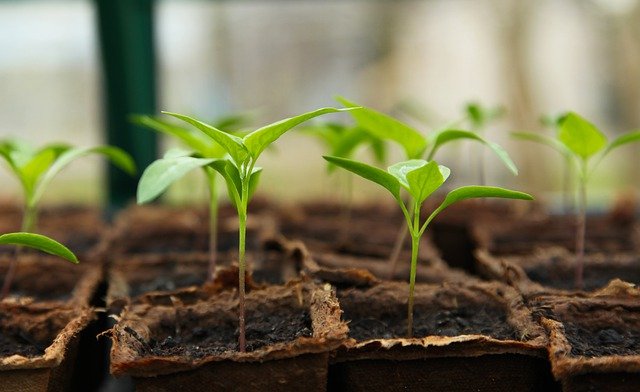
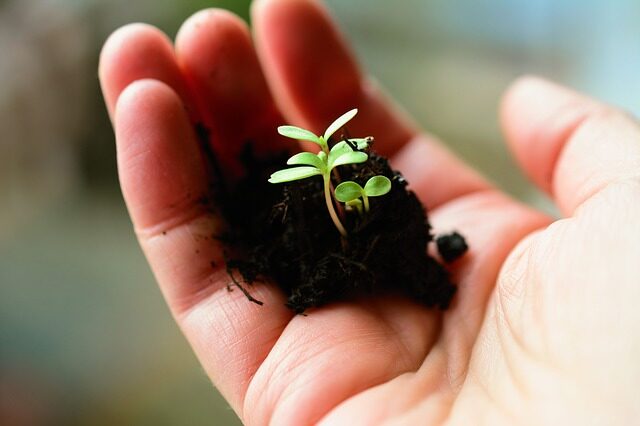
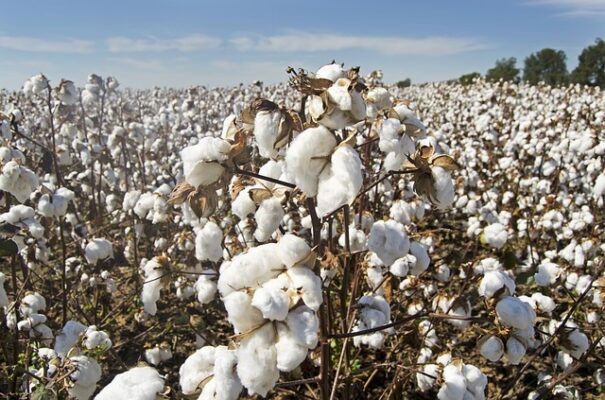
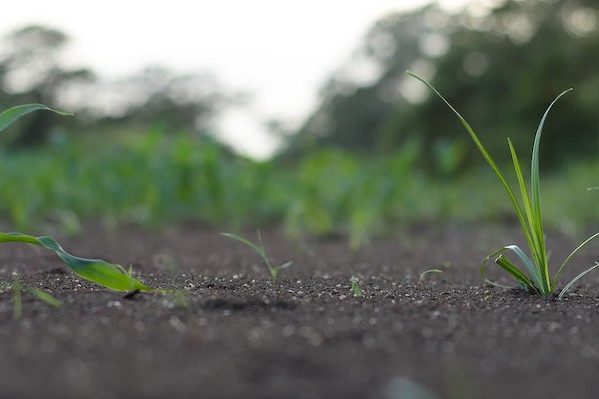


By David R. Montgomery, University of Washington

One of the biggest modern myths about agriculture is that organic farming is inherently sustainable. It can be, but it isn’t necessarily. After all, soil erosion from chemical-free tilled fields undermined the Roman Empire and other ancient societies around the world. Other agricultural myths hinder recognizing the potential to restore degraded soils to feed the world using fewer agrochemicals. ![]()
When I embarked on a six-month trip to visit farms around the world to research my forthcoming book, “Growing a Revolution: Bringing Our Soil Back to Life,” the innovative farmers I met showed me that regenerative farming practices can restore the world’s agricultural soils. In both the developed and developing worlds, these farmers rapidly rebuilt the fertility of their degraded soil, which then allowed them to maintain high yields using far less fertilizer and fewer pesticides.
Their experiences, and the results that I saw on their farms in North and South Dakota, Ohio, Pennsylvania, Ghana and Costa Rica, offer compelling evidence that the key to sustaining highly productive agriculture lies in rebuilding healthy, fertile soil. This journey also led me to question three pillars of conventional wisdom about today’s industrialized agrochemical agriculture: that it feeds the world, is a more efficient way to produce food and will be necessary to feed the future.
According to a recent U.N. Food and Agriculture Organization (FAO) report, family farms produce over three-quarters of the world’s food. The FAO also estimates that almost three-quarters of all farms worldwide are smaller than one hectare – about 2.5 acres, or the size of a typical city block.

Only about 1 percent of Americans are farmers today. Yet most of the world’s farmers work the land to feed themselves and their families. So while conventional industrialized agriculture feeds the developed world, most of the world’s farmers work small family farms. A 2016 Environmental Working Group report found that almost 90 percent of U.S. agricultural exports went to developed countries with few hungry people.
Of course the world needs commercial agriculture, unless we all want to live on and work our own farms. But are large industrial farms really the best, let alone the only, way forward? This question leads us to a second myth.
Many high-volume industrial processes exhibit efficiencies at large scale that decrease inputs per unit of production. The more widgets you make, the more efficiently you can make each one. But agriculture is different. A 1989 National Research Council study concluded that “well-managed alternative farming systems nearly always use less synthetic chemical pesticides, fertilizers, and antibiotics per unit of production than conventional farms.”
And while mechanization can provide cost and labor efficiencies on large farms, bigger farms do not necessarily produce more food. According to a 1992 agricultural census report, small, diversified farms produce more than twice as much food per acre than large farms do.
Even the World Bank endorses small farms as the way to increase agricultural output in developing nations where food security remains a pressing issue. While large farms excel at producing a lot of a particular crop – like corn or wheat – small diversified farms produce more food and more kinds of food per hectare overall.
We’ve all heard proponents of conventional agriculture claim that organic farming is a recipe for global starvation because it produces lower yields. The most extensive yield comparison to date, a 2015 meta-analysis of 115 studies, found that organic production averaged almost 20 percent less than conventionally grown crops, a finding similar to those of prior studies.
But the study went a step further, comparing crop yields on conventional farms to those on organic farms where cover crops were planted and crops were rotated to build soil health. These techniques shrank the yield gap to below 10 percent.
The authors concluded that the actual gap may be much smaller, as they found “evidence of bias in the meta-dataset toward studies reporting higher conventional yields.” In other words, the basis for claims that organic agriculture can’t feed the world depend as much on specific farming methods as on the type of farm.

Consider too that about a quarter of all food produced worldwide is never eaten. Each year the United States alone throws out 133 billion pounds of food, more than enough to feed the nearly 50 million Americans who regularly face hunger. So even taken at face value, the oft-cited yield gap between conventional and organic farming is smaller than the amount of food we routinely throw away.
Conventional farming practices that degrade soil health undermine humanity’s ability to continue feeding everyone over the long run. Regenerative practices like those used on the farms and ranches I visited show that we can readily improve soil fertility on both large farms in the U.S. and on small subsistence farms in the tropics.
I no longer see debates about the future of agriculture as simply conventional versus organic. In my view, we’ve oversimplified the complexity of the land and underutilized the ingenuity of farmers. I now see adopting farming practices that build soil health as the key to a stable and resilient agriculture. And the farmers I visited had cracked this code, adapting no-till methods, cover cropping and complex rotations to their particular soil, environmental and socioeconomic conditions.
Whether they were organic or still used some fertilizers and pesticides, the farms I visited that adopted this transformational suite of practices all reported harvests that consistently matched or exceeded those from neighboring conventional farms after a short transition period. Another message was as simple as it was clear: Farmers who restored their soil used fewer inputs to produce higher yields, which translated into higher profits.
No matter how one looks at it, we can be certain that agriculture will soon face another revolution. For agriculture today runs on abundant, cheap oil for fuel and to make fertilizer – and our supply of cheap oil will not last forever. There are already enough people on the planet that we have less than a year’s supply of food for the global population on hand at any one time. This simple fact has critical implications for society.
So how do we speed the adoption of a more resilient agriculture? Creating demonstration farms would help, as would carrying out system-scale research to evaluate what works best to adapt specific practices to general principles in different settings.
We also need to reframe our agricultural policies and subsidies. It makes no sense to continue incentivizing conventional practices that degrade soil fertility. We must begin supporting and rewarding farmers who adopt regenerative practices.
Once we see through myths of modern agriculture, practices that build soil health become the lens through which to assess strategies for feeding us all over the long haul. Why am I so confident that regenerative farming practices can prove both productive and economical? The farmers I met showed me they already are.
David R. Montgomery, Professor of Earth and Space Sciences, University of Washington
This article was originally published on The Conversation. Read the original article.
This year, 2015, is the International Year of Soils (IYS). To celebrate IYS David Lindbo (@DavidLindbo), former president of the Soil Science Society of America (SSSA) and an IYS committee leader, explains why soils are vital to sustain every aspect of life (including plants of course!).
It’s the International Year of Soils! Tell this to someone and you’ll often get the response: “A year of dirt? Who came up with that idea?” So here is a blog post to answer exactly that and explain why soils are not just dirt.
Why soil?
Consider the world around you and all the things that make the earth a great place to live. We all require food, clothing, shelter, and water to survive – all of which are related to a single, often overlooked resource: SOIL.
Food
Consider your breakfast this morning: did you have cereal with milk, sausage and bacon, pastries, toast, orange juice? What were the ingredients? Flour from wheat, oranges from a tree, milk from a cow that has been fed on grass, meat from animals who are fed with grains and forage feed. All your breakfast foods, and foods in general, can be traced to plants, and plants are dependent on soil! Plants get water from the soil as well as the nutrients they need to grow. If we really think about it, when you eat, you are “eating soil”, several steps removed.
Shelter
Next, think about the home you live in. It is easy to see that bricks, made from clay and sand, are connected to soil. Lumber is wood, which comes from trees, which need soil to survive. So when you look at your house consider that it would not exist as you know it without the soil.
Clothes
Finally, consider the clothes you wear. Natural fibers used to make clothing are all directly related to plants – cotton and flax (linen) are plant fibers, wool is fiber made from the hair of animals that eat plants, and silk is made by silk worms that eat plants. Rayon is a semi-synthetic fiber made by processing naturally occurring cellulose, which comes from plants or trees. Even synthetic materials are derived from petroleum products made from fossil fuels, which in turn originate from plant and animal remains that have undergone extreme changes deep in the earth. They too needed soil when they were living. Once again we see that soil is critical to our clothing needs.
Water
Soil is critical to our food, fiber, and shelter needs. It also plays an important role in providing us with one other essential item: water. There is a finite amount of water on earth, and only a small proportion is drinkable. Given that it is constantly recycled, how does this water remain clean enough for us to drink?
In urban areas we treat water with chemicals to make it suitable for human consumption. However, many communities get their water from chemically untreated groundwater, which is treated by the soil instead. As water infiltrates and percolates through the soil, the chemical and physical properties of soil clean the water by removing contaminants. Soil is perhaps the largest single water (and wastewater) treatment plant in the world. Soil helps keep our drinking water clean by filtering it.
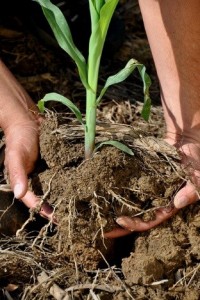
Healthy Soil for Healthy Plants. Photo by Natural Resource Conservation Service Soil Health Campaign used under Creative Commons 2.0
Happy soils mean happy plants
Soils are essential to plants and provide many of the nutrients they need to grow. In soils lacking adequate amounts of nutrients for crop production, we add some to ensure growth and a reliable food supply. These nutrients are then stored in the soil until the plant needs them. In this way soil acts as a nutrient reservoir for plant growth and survival.
Soil also provides critical support for the plant roots that anchor the plant to prevent it from falling down, being washed away or blown over. Soil also holds water in its pores. The water stored in the pores is removed by plant roots as needed for the plant to grow and photosynthesize.
To protect life we must protect soil
Soil connects us all. We need it to survive. As we move through 2015, the International Year of Soils, remember that if you know soil you know life, and with no soil there would be no life.
More information:
IYS is based around 12 monthly themes to reflect the diverse values of soils: information on these is available here. The SSSA also has a YouTube channel exploring the importance of soil, and a blog.
 This week, New Media Fellow Amelia Frizell-Armitage has been talking to Ellen Bergfeld, CEO of the Alliance of Crop, Soil and Environmental Science Societies (ACSESS), a coalition of the American Society of Agronomy (ASA), Crop Science Society of America (CSSA) (both of which are Global Plant Council member organisations) and the Soil Science Society of America (SSSA). She spoke to us about the societies, her role as CEO, and her visions for the future.
This week, New Media Fellow Amelia Frizell-Armitage has been talking to Ellen Bergfeld, CEO of the Alliance of Crop, Soil and Environmental Science Societies (ACSESS), a coalition of the American Society of Agronomy (ASA), Crop Science Society of America (CSSA) (both of which are Global Plant Council member organisations) and the Soil Science Society of America (SSSA). She spoke to us about the societies, her role as CEO, and her visions for the future.
What is the purpose of the ACSESS?
ACSESS is a nonprofit organization founded by the ASA, CSSA and SSSA to support the activities of member societies.
ACSESS has five primary goals. 1) Firstly, we help professional societies representing agronomic, crop, soil, and environmental sciences to collaborate and 2) advance the missions, visions, and activities of these societies. 3) We promote the value and image of agronomic, crop, soil and environmental resource professions, and 4) unify communication with scientists, educators, policy-makers, and the public to enhance impact. Finally, 5) we engage science-based knowledge on the challenges facing humanity.
How do the work and aims of the ACSESS coalition cross over with those of the Global Plant Council (GPC)?
The GPC’s goal to feed an ever-growing human population sustainably is of paramount interest and importance to all three of our member societies.
Additionally, all three societies advocate nationally and internationally for plant and crop sciences. They act as catalysts to generate plant-based solutions for the sustainable intensification of agriculture, whilst preserving biodiversity, protecting the environment, reducing world hunger, and improving human health and wellbeing.
In your opinion, what will be the biggest challenges over the next 50 years in terms of food production and agriculture?
Three things: climate change, degraded and decreased natural resources, and population growth.
What do you think our top priorities should be in terms of tackling these issues?
Adapting plants to climatic changes and developing crops that can be sustainably grown in the field is a top priority, and very broad in terms of the research required.
Another large gap I see is education and science literacy. By educating and empowering communities, particularly girls and women, regarding the carrying capacity of the planet, we can open up discussions and raise awareness of the need for sustainability in all aspects of our lives.
What are the key developments in agronomy required to ensure sustainable agriculture in the future?
If we continue to deplete our soil and water resources, this will have a dire impact on our ability to feed the population. We need to recognize this, and adapt our agricultural practices accordingly.
2015 is International Year of Soils. Can you sum up in one sentence why soils are so important?
Soils Sustain Life!
What inspired you to leave academia and move into science policy, strategy and administration?
At the time I was looking to graduate, I would have had to do multiple postdocs to be competitive for an academic position. I enjoyed the teaching and working with animals, but not the lab work or grant writing. I pursued the Congressional Science Fellowship to open new doors and took advantages of the opportunities that followed.
Day to day, what is the most rewarding part of your job as CEO?
I enjoy connecting our sciences, and scientists, to address the global challenges that we face.
Interacting with the best and brightest minds who are collectively addressing these challenges is incredibly inspiring and fulfilling.
Ellen Bergfeld received her BSc in Animal Science from Ohio State University, going on to study reproductive physiology, first at masters then PhD level, at the University of Nebraska-Lincoln. After graduating she was awarded the Federation of Animal Science Societies Congressional Science Fellowship. This Fellowship provides an opportunity for highly skilled scientists to spend a year working in congress as special assistants in legislative areas. Following the fellowship Ellen became Executive Director of the American Society of Animal Science. Ellen is now CEO of ACSESS.